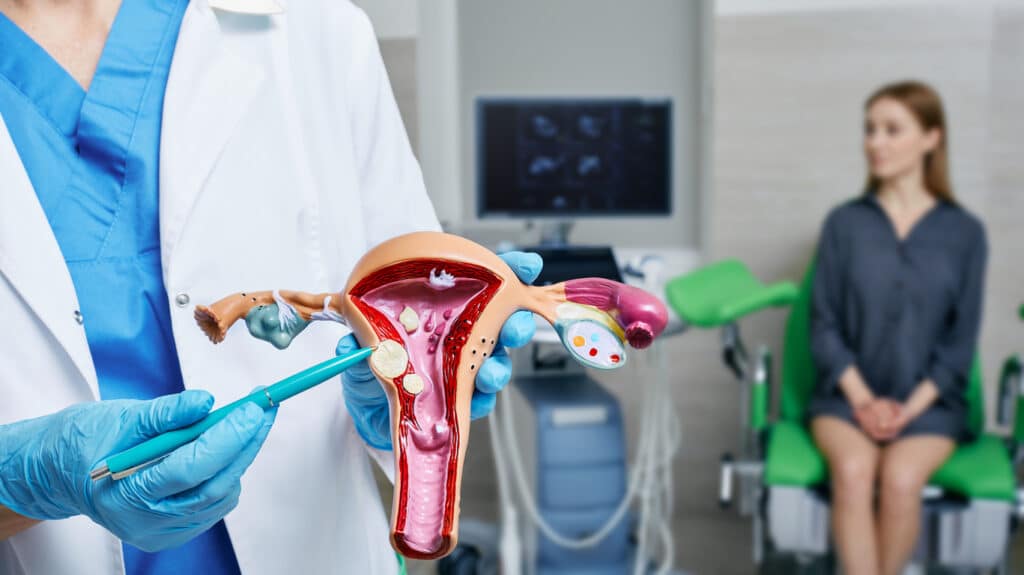Critical Limb Ischemia (CLI) is a severe vascular disease that can have life-altering consequences. It’s a condition marked by significant obstruction of the arteries, leading to reduced blood flow to the extremities.
This can result in severe pain, non-healing wounds, and even the potential loss of a limb. Understanding this condition is crucial for those diagnosed with it, as well as their caregivers.
Our aim is to demystify CLI, breaking down the medical jargon into understandable terms. We’ll delve into its causes, symptoms, and treatments, providing a comprehensive guide to this complex condition.
We’ll also explore practical strategies for preventing CLI, based on the latest medical research and clinical practice. These strategies can help manage the disease and improve quality of life for those affected.
Whether you’re a patient, a caregiver, or simply seeking to understand more about vascular diseases, this article is for you. Let’s embark on this journey to better vascular health together.
Understanding Critical Limb Ischemia (CLI)
Critical Limb Ischemia (CLI) is a complex and severe condition. It results from a significant reduction in blood flow to the limbs, often due to artery blockages. This condition represents an advanced stage of peripheral artery disease (PAD), where symptoms become chronic and debilitating.
Patients with CLI experience persistent pain, especially at rest, which can severely impact daily activities. The condition also leads to non-healing sores or wounds on the legs or feet, which can escalate to gangrene if not treated promptly. Understanding the implications of CLI is crucial for effective management and prevention.
Common causes of CLI are conditions like PAD, blood clots, and atherosclerosis, where plaque builds up in artery walls. Recognizing these underlying issues is essential to address CLI effectively.
Key takeaways about CLI include:
- Severe artery blockage leads to significantly reduced blood flow.
- Symptoms include chronic pain, non-healing wounds, and potential limb damage.
- Connection to PAD highlights progression from milder forms of vascular disease.
Early detection and management are critical to prevent CLI’s progression. With timely intervention, the serious consequences of CLI, like limb loss, can often be avoided. Learning more about CLI is a pivotal step for patients and caregivers alike.
What is Critical Limb Ischemia?
Critical Limb Ischemia is a chronic condition of compromised blood circulation in the limbs. It’s characterized by severe, persistent pain and the risk of limb loss. This condition emerges when arteries become too narrow or blocked, restricting adequate blood flow. As a result, tissues in the legs and feet do not receive enough oxygen and nutrients.
CLI is often a culmination of long-term issues with blood circulation. The lack of blood flow can lead to the death of muscle and skin tissues, posing serious health risks. Understanding CLI helps in recognizing its urgency and the need for timely medical attention.
The Connection Between Peripheral Artery Disease (PAD) and CLI
Peripheral Artery Disease (PAD) and CLI are closely linked. PAD represents the earlier stages of poor arterial health, where arteries become narrowed by fatty deposits. CLI is the advanced stage of this progression, marked by significantly reduced blood flow.
As PAD advances to CLI, symptoms become more severe and persistent. While PAD symptoms might be alleviated by rest, CLI symptoms can result in pain even when resting. This continual pain is a distinctive marker of CLI.
Addressing PAD early can potentially halt its progression to CLI. By managing risk factors associated with PAD, such as controlling cholesterol and blood sugar levels, one can reduce the likelihood of developing CLI.
Recognizing Ischemia Symptoms
Recognizing ischemia symptoms early is crucial for managing CLI. Pain is a primary symptom, often described as burning or aching, which can disturb sleep and daily activities. This pain typically presents in the legs or feet, even when not using them.
Another significant symptom is the presence of non-healing wounds or sores. These may appear on the toes, feet, or legs, leading to severe infections. Such wounds clearly indicate inadequate blood flow and warrant immediate medical attention.
Additionally, gangrene can develop if blood flow does not improve. This condition involves tissue decay and poses serious risks to limb health. Identifying these symptoms early allows patients to seek timely intervention to mitigate further complications.
Risk Factors and Early Detection
Understanding the risk factors for Critical Limb Ischemia (CLI) is essential in preventing its onset. Identifying those at higher risk allows for better monitoring and early intervention. Commonly, CLI is closely linked to a few significant lifestyle and health conditions.
Risk factors include unhealthy lifestyles and pre-existing health conditions. Smoking, for instance, severely affects blood vessels, narrowing arteries and impeding blood flow. Similarly, diabetes can lead to artery damage and poor circulation, increasing CLI risk.
Monitoring for CLI should involve regular check-ups, especially for at-risk individuals. By being vigilant, early signs of reduced blood flow can be noticed sooner. Timely interventions can prevent these early signs from developing into full-blown CLI.
Key risk factors for CLI are:
- Smoking habits: Detrimental to arterial health.
- Diabetes: Impacts circulation and increases artery damage.
- Hypertension: Elevates blood pressure, straining blood vessels.
- Age: Older adults face higher risks due to natural vessel wear.
- High cholesterol: Contributes to plaque buildup in arteries.
A multidisciplinary approach, involving healthcare professionals, is crucial for early detection. Regular screening through simple tests, like the ankle-brachial index (ABI), offers insight into circulation and identifies potential issues before symptoms worsen.
Identifying Risk Factors for CLI
Identifying risk factors for CLI involves assessing both lifestyle choices and existing health conditions. Smoking is a leading cause. Tobacco use constricts blood vessels, which impairs circulation and worsens vascular health.
Diabetes is another significant factor, as it affects blood flow and can lead to artery damage if unmanaged. Similarly, high blood pressure exerts extra force on artery walls, which can lead to damage and contribute to CLI.
Age also plays a role. As people get older, their arteries naturally lose flexibility, making blockages more likely. Additionally, maintaining high cholesterol levels can accelerate plaque buildup, restricting blood flow further and heightening the risk of CLI.
The Importance of Early Diagnosis
Early diagnosis of Critical Limb Ischemia is paramount in effective disease management. Recognizing symptoms early allows for interventions that can prevent severe outcomes, including limb loss. Regular screening for at-risk populations can detect problems before they escalate.
The sooner CLI is detected, the sooner treatment can begin, which improves outcomes. Addressing CLI early minimizes the risk of complications, thereby preserving limb function and enhancing quality of life. Early intervention creates a pathway to successful management and recovery.
Lifestyle Changes to Prevent CLI
Adopting certain lifestyle changes can significantly reduce the risk of developing Critical Limb Ischemia (CLI). Implementing these changes requires commitment but offers substantial benefits. A proactive approach can make a considerable difference in vascular health.
Smoking cessation is crucial. Smoking harms arterial walls, exacerbating conditions like CLI. Quitting reduces these risks and improves overall circulation within weeks. Assistance from healthcare providers can facilitate this challenging yet vital step.
A balanced diet and regular exercise are equally important. A nutritious diet rich in fruits and vegetables helps maintain healthy cholesterol levels. Exercise supports circulation, strengthens the heart, and manages weight—all critical for vascular health.
Managing underlying conditions like diabetes and hypertension is necessary for controlling CLI risks. Proper management minimizes the impact of these conditions on arteries. Regular monitoring and adherence to prescribed medications are key to achieving optimal health.
Effective lifestyle changes for preventing CLI include:
- Quitting smoking: Essential for improving arterial health.
- Adopting a balanced diet: Focus on low-sodium, high-fiber foods.
- Engaging in regular physical activity: Aids circulation and heart health.
- Managing chronic conditions: Keeps contributing factors in check.
- Monitoring blood pressure and cholesterol: Helps prevent artery damage.
By incorporating these practices, individuals can significantly lower their risk of CLI. Education on lifestyle adjustments is integral, empowering patients to take control of their health. Consistent efforts yield long-term benefits, reducing complications associated with peripheral artery disease.
Smoking Cessation and CLI Prevention
Quitting smoking is perhaps the most powerful step in preventing Critical Limb Ischemia. The harmful chemicals in tobacco constrict and damage blood vessels, significantly exacerbating CLI risks. Ending tobacco use improves blood flow and restores oxygen delivery to tissues.
Support from healthcare professionals can be invaluable during this process. They offer resources like nicotine replacement therapies and counseling, increasing the likelihood of successful cessation. Stopping smoking not only reduces CLI risk but also improves overall cardiovascular health.
Exercise and Diet: Building Vascular Health
Regular exercise and a healthy diet are foundational to preventing CLI. Physical activity keeps blood vessels flexible and improves circulation, crucial in preventing arterial blockages. Even moderate exercises, such as walking or cycling, can be beneficial.
A diet rich in lean proteins, whole grains, and colorful fruits and vegetables supports vascular health. These foods provide essential nutrients and help maintain optimal blood pressure and cholesterol levels. Avoiding high-sugar and high-salt foods is equally important.
Managing Underlying Conditions
Managing existing health conditions is pivotal in minimizing CLI risks. Conditions like diabetes and hypertension directly impact vascular health. Effective management involves regular medical check-ups, blood sugar monitoring, and medication adherence.
Healthcare providers play a crucial role in this management. They can tailor treatment plans to each patient’s needs, optimizing outcomes. Keeping these conditions under control prevents complications that could lead to CLI. Regular monitoring and proactive management ensure better vascular health.
Medical Interventions and Treatments
When lifestyle changes aren’t enough, medical interventions for Critical Limb Ischemia (CLI) become necessary. These interventions aim to restore proper blood flow and protect the affected limb. Understanding your options can help you make informed treatment decisions.
Medications and Blood Flow Improvement
Medications play a pivotal role in managing CLI. They often include blood thinners and drugs to enhance circulation. These medications help prevent clot formation, which can worsen ischemia. Additionally, they may alleviate symptoms like pain and discomfort.
Your doctor might prescribe medications to manage underlying conditions contributing to CLI. Proper adherence to these medications is crucial for improving overall vascular health. Regular follow-ups ensure that the treatment remains effective and adjusted as necessary.
Surgical Options for Restoring Blood Flow
In some cases, surgery may be required to restore circulation in critical areas. Procedures such as angioplasty and stenting can open clogged arteries. These minimally invasive techniques involve inserting a tiny balloon or mesh to improve blood flow.
For more severe blockages, bypass surgery might be necessary. This involves creating a new pathway for blood to flow around the clogged artery. These surgical options are often life-saving and require detailed discussions with your healthcare provider.
The Role of Limb Salvage and Multidisciplinary Care
Limb salvage is a key focus in CLI treatment, aiming to prevent amputation. A multidisciplinary team approach increases the chances of successful limb salvage. This team includes vascular surgeons, podiatrists, and rehabilitation specialists.
These professionals work together to develop personalized treatment plans. Their combined expertise helps manage wounds, improve circulation, and enhance overall limb function. This comprehensive approach supports better outcomes and preserves mobility for patients.
Through understanding these interventions and collaborating with your healthcare team, you can effectively manage CLI. Each treatment option requires careful consideration and patient-specific planning to optimize results and enhance quality of life.
Monitoring and Ongoing Management
Continuous monitoring is crucial for managing Critical Limb Ischemia (CLI) effectively. Regular check-ups help detect changes in your condition early, reducing complications. Staying informed about your health is essential for making timely decisions.
Regular Check-Ups and Monitoring
Frequent visits to your healthcare provider are vital in CLI management. During these check-ups, doctors assess your symptoms and overall vascular health. They also monitor the effectiveness of any medications or treatments you’re receiving.
Early detection of complications can prevent severe outcomes like amputation. Regular check-ups allow your healthcare provider to adjust treatment plans as needed. Consistent monitoring ensures you receive the most appropriate care for your unique situation.
Footwear and Foot Care
Proper foot care is a key component of managing CLI. Wearing comfortable, well-fitting shoes protects the feet from injury. It helps prevent issues like sores or ulcers, which can quickly become serious without prompt attention.
Regular inspections of your feet are equally important. Look for any signs of redness, swelling, or changes in skin condition. Consulting a podiatrist for routine foot care can significantly lower the risk of severe complications.
Advanced Imaging and Diagnostic Techniques
Advanced imaging techniques are invaluable in accurately diagnosing and managing CLI. Technologies like MRI and CT scans offer detailed insights. They help track disease progression and guide treatment decisions. Engaging with these technologies can enhance your care experience.
Stay Ahead of Critical Limb Ischemia
Understanding Critical Limb Ischemia (CLI) and recognizing its signs early can be life-saving. Remember, CLI is a severe condition that requires prompt and effective treatment to prevent irreversible damage, such as limb loss.
At Coastal Vascular Center, our team of vascular specialists is equipped with the knowledge and technology to offer advanced treatments for CLI. We are committed to providing personalized care to improve your health outcomes and quality of life.
If you suspect that you or someone you know may be suffering from Critical Limb Ischemia, don’t hesitate to reach out. Contact Coastal Vascular Center today at [insert phone number] to schedule an appointment. Let us help you take the necessary steps towards recovery and better vascular health.




